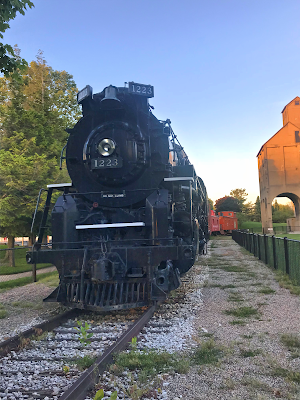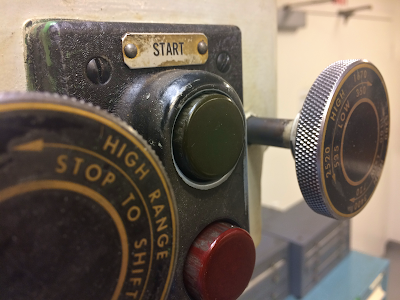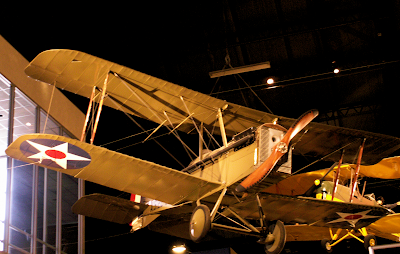The old jerkwater troughs have been absent from railroads even longer than the steam locomotives themselves. One has to wonder though, how many firemen were a bit too slow in raising the scoop before the end of the trough.
Monday, December 27, 2021
Monday, December 20, 2021
Monday, December 13, 2021
Monday, December 06, 2021
Monday, November 29, 2021
Monday, November 22, 2021
Monday, November 15, 2021
Monday, November 08, 2021
Sunday, October 31, 2021
Monday, October 25, 2021
Monday, October 18, 2021
Cool morning
Mt. Forest Island isn't much of a mountain and these days you would be hard pressed to call it an island. It does, at least, have trees.
The land here previously resided where Lake Michigan is now. When the Wisconsinan glacier melted this was part of an earthen dam that created an area of still water behind it. This silted in forming much of the land along the lakeshore. When Chicago was still the Chicago Portage, much of the area was a swamp. (The wet kind; the political kind came later.) Shallow standing water was not uncommon at different times in the year and early topo maps showed multiple ponds and sloughs throughout the area. As such, it wasn't much of a stretch to call the dry areas islands. Mt. Forest was the largest in the area. To the east is Stoney Island (extending between Worth and Alsip IL) and still further east is Blue Island and the eponymous town which sits atop it.
Canals, drainage ditches, sewer systems, and pumps have drained much of the land and rendered the island names meaningless...MOST of the time!
Monday, October 11, 2021
Ballast train
Seen on the East Lancashire Railway.
Some of the fundamentals or railroad design haven't changed much over the years. Rails transfer their load to cross ties/sleepers which simultaneously serve to spread out the load over a larger area and keep the rails at the proper gauge. All of this needs a stable platform and resting it on dirt would be unacceptable for anything that isn't exceedingly temporary. Crushed stone ballast is used to create the roadbed and spread around the rails once laid in place.
Naturally part of maintenance is the replacement or replenishment of ballast along the tracks and railroads have long used special hopper cars to accomplish this. A train like this (albeit usually a longer one) would have a crew of men with shovels and rakes to spread the ballast while someone manned the gates on the hoppers to dispense the stone as needed.
Now skip forward to the present day. A Herzog ballast train has added features Mr. Stephenson couldn't have predicted.
Those solar panels are a clue that these cars are more than just mechanical devices. They use a computerized system for dispensing the ballast. Herzog systems can be tracked and triggered by GPS so that metered amounts are dispensed along the track but not at switch points, trackside detectors, or other inappropriate locations like grade crossings. They can also be controlled by one or two people on the ground who use a handheld radio system to trigger each ballast door individually. You can even see the radio frequency ID numbers on the side of the car.
There is usually a chase vehicle with someone to clean up any misplaced deposits, but considering you can now re-ballast a long stretch of track at nearly 20 MPH I wonder if the navvies of old would even recognize what's become of the railroads.
Monday, October 04, 2021
Inverted!
Fokker Dreidecker.
While not the best aircraft of the war, it was among the most maneuverable and remains, one of the most iconic aircraft of its time.
See at the Air Force Museum in Dayton OH
Monday, September 27, 2021
Monday, September 20, 2021
Fall is creeping in
Nearing golden hour at the Saganashkee Slough. Near this spot there was once a small hand-dug canal that fed water from a man made lake at Blue Island to the I&M canal. It was probably little more than a ditch through a swamp, but it supposedly carried some freight traffic. When the Cal-Sag channel was dug, the excavated soil created a dam making this this slough.
Monday, September 13, 2021
Falling
Seen at the Dubai mall.
If you are going to have public art, this is how to do it! I’m told this display is a tip of the hat to Dubai’s early days when pearl diving was a significant source of income.
Monday, September 06, 2021
Monday, August 30, 2021
Is that pronounced...
..."ot-tow-yee-ROH", "ot-tow-j-EYE-row", "ot-tow-GEE-row"...
Seen at the Air Force museum in Dayton OH circa 2008
Monday, August 23, 2021
Dewy's workshop
If you ever think your shop is cramped, just try running a mill, a drill, two lathes, and shaper off of lineshafts in an 1892 steam ship!
Monday, August 16, 2021
Monday, August 09, 2021
Monday, August 02, 2021
I think I left the blinker on
.
I wish I remembered what aircraft this was, but I'm fairly certain this was taken at the Solway Aviation Museum.
Monday, July 26, 2021
Monday, July 19, 2021
Water as a display of opulence
Burj Khalifa and the Dubai fountain.
Given that there's not much in the way of a fresh water supply around here, it's a pretty spectacular feat to have a fountain big enough you give boat tours around it.
Don’t spread it around, but it’s fed by ‘recycled’ water from the tower that’s been run through some serious reverse osmosis filters.
Monday, July 12, 2021
Sunday, July 04, 2021
Monday, June 28, 2021
Night patrol
P-61c Black Widow
(the paint scheme may be more appropriate for the 61b)
I remember learning about these and thinking they were one of the coolest planes of the war. As is often the case though, the real work was done with the planes available, not the ideal ones for the job. The US hadn't found a need for a dedicated night fighter prior to the outbreak of war in Europe and this was basically a response to the German attacks during the blitz.
The first production models were available in October of '43 but flew their first combat missions in mid '44 by which point the P-51 had already put the Luftwaffe on the back foot. Had it been available earlier, it's extended loiter time could have made a pretty significant difference in the damage done by German bombers. It did, however, serve very effectively in ground attack rolls during the battle of the bulge. and is unofficially credited with the last kill of the war (in the Pacific.)
Neat, just a little too late.
Monday, June 21, 2021
Slug!
When operating at slow speeds, most diesel electric locomotives can produce more power than they can transmit to the rail, so sometimes railroads will use a slug or calf for switching and local duties. It's basically a chassis with additional motors and axels (and weight) but no engine. It uses the excess electricity produced by another locomotive to provide a extra tractive effort.
Monday, June 14, 2021
Monday, June 07, 2021
Monday, May 31, 2021
Monday, May 24, 2021
Thermodynamics at work
This steam engine is a tandem compound design, with a high and low pressure cylinder. The high pressure cylinder is the small one, closest to the camera. You can see the insulated steam line leading from there to the steam chest of the larger, low pressure cylinder. This engine was built, and still operates, in Ballarat Australia at the Sovereign Hill historical site.
Monday, May 17, 2021
Bazaar
The really bizarre thing is that they sell mostly the same made in (insert Asian country) stuff as pretty much every mall and airport concourse I've been in.
Monday, May 10, 2021
Upheaval
Grampians National Park, Victoria Australia This view is from the early stages of the Beehive falls to Mt. Difficult trail.
This is vaguely reminiscent of the desert varnish I remember from Utah and other parts of the southwestern US, but with a very gray cast to it rather than being nearly black. It's still quite visible which surfaces are 'new' by the orange and yellow hues. Of course by new I mean they've probably been exposed a few thousand years or less.
Monday, May 03, 2021
Monday, April 26, 2021
Monday, April 19, 2021
Subscribe to:
Posts (Atom)













































